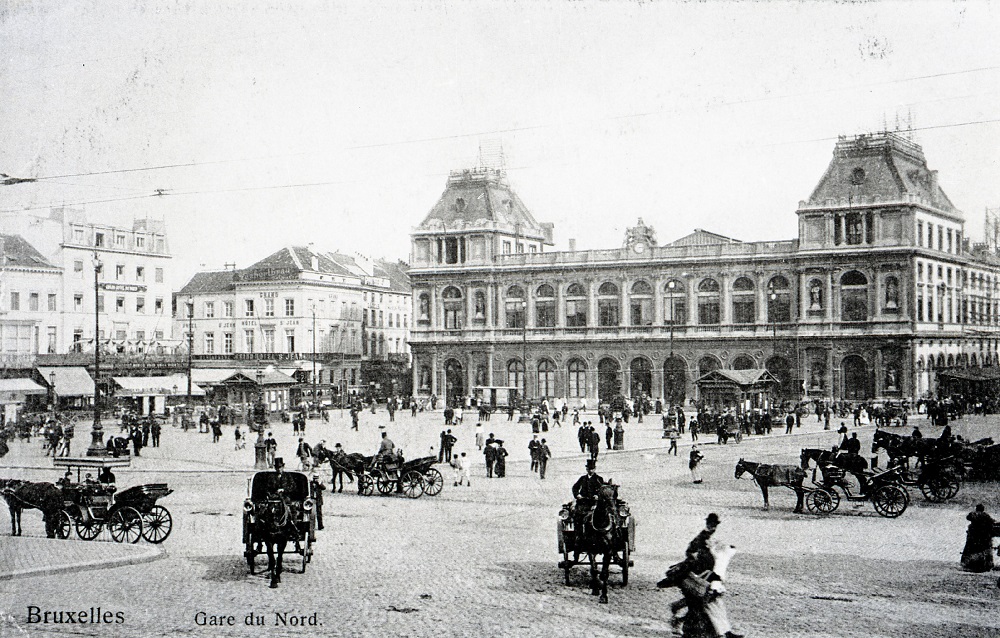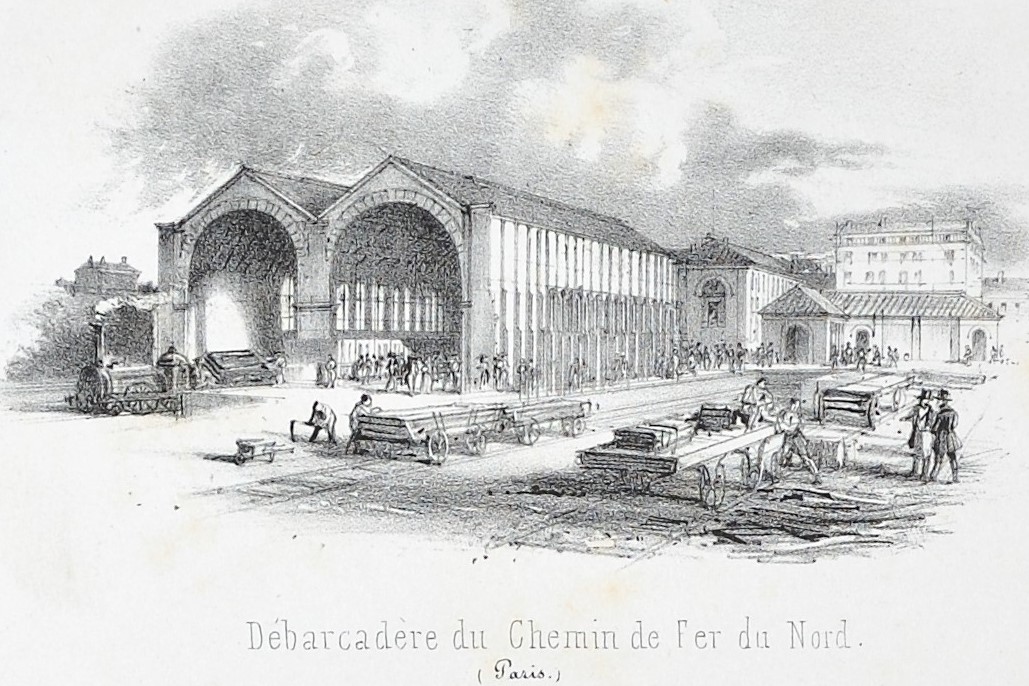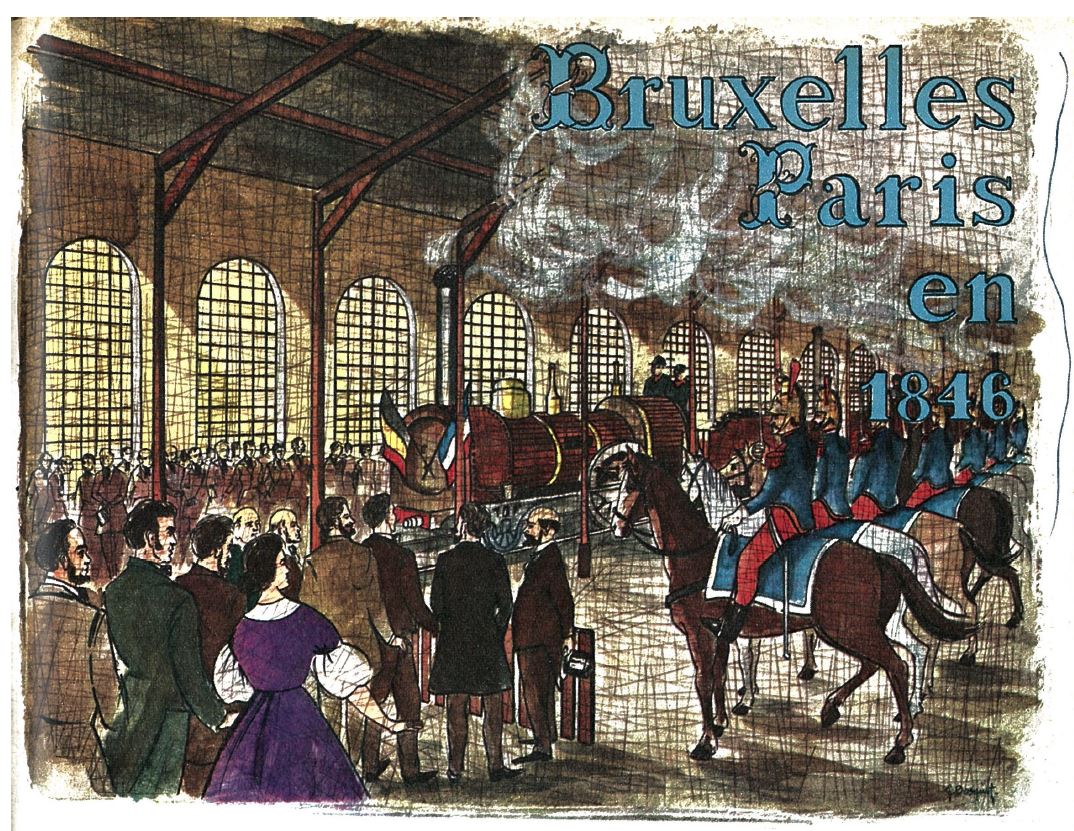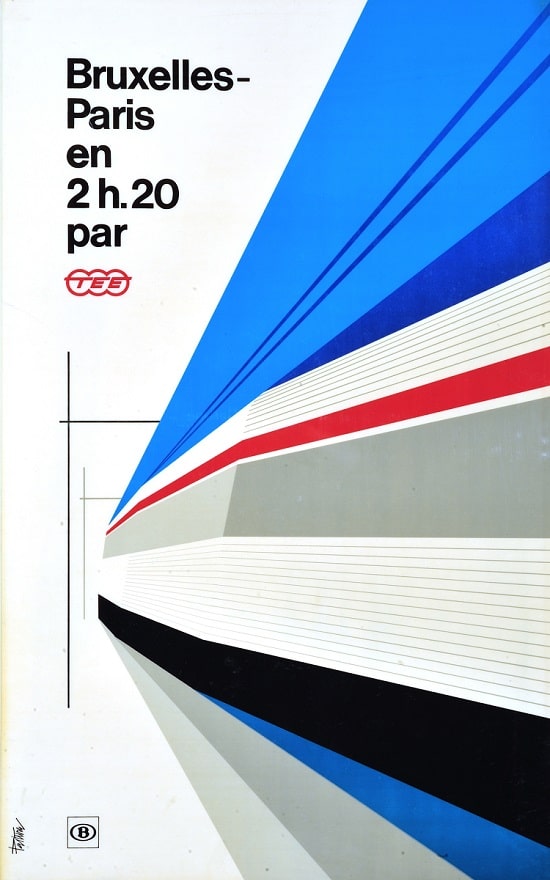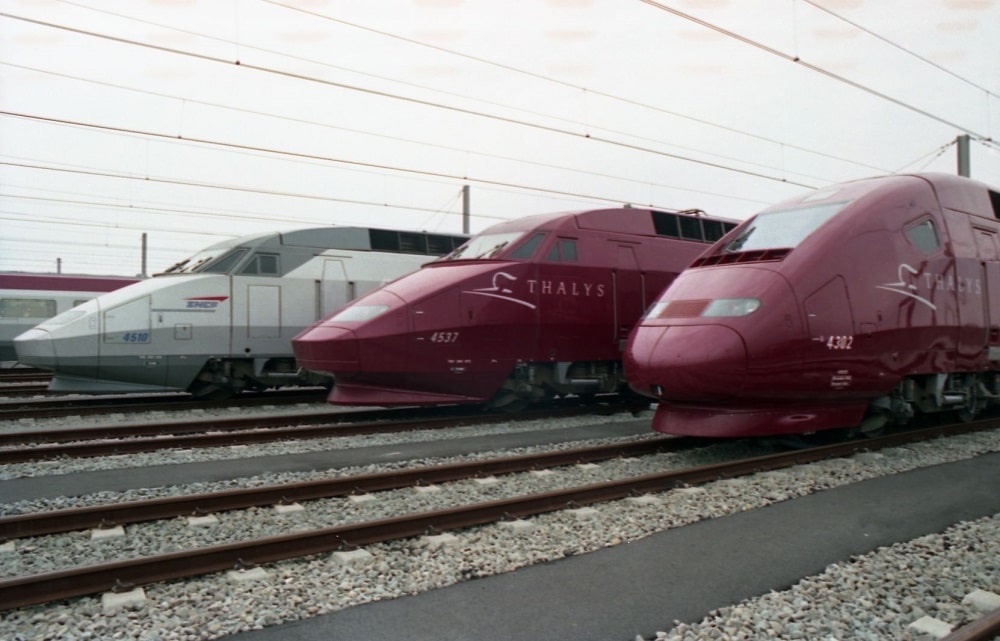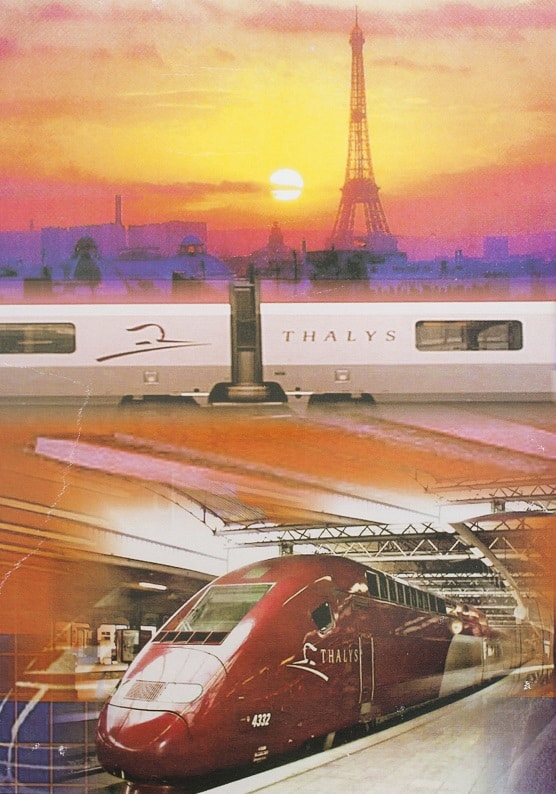In 1839, when the peace treaty between Belgium and the Netherlands was signed, Belgium’s 555-km railway network was already more than half finished. During the following years, the Belgian network was completed and work began on connections with the French and Prussian railways.
The Brussels-Paris line: a 175-year history
In June 2021, the Paris – Brussels railway line will be celebrating its 175th anniversary, which opened the first chapter in the story of the European international railway network. It is also the 25th anniversary of the Thalys service.
First steps
In 1842, a first 11-km local track junction was opened between Mouscron in Belgium and Tourcoing in France, in the direction of Lille. It was soon followed by a rail link between Mons and Quiévrain, in the direction of Valenciennes. The very next year, Belgium and Prussia opened the Brussels – Mechelen – Louvain – Cologne line.
The envoy of King Louis-Philippe of France in Brussels expressed concern and informed his government that there was a risk that Belgium might be drawn into the economic and political sphere of Prussia if nothing were done in France.
With its two small cross-border lines to Lille and Valenciennes, France was indeed lagging behind. The decision to build a French national railway line was only made in 1842, eight years after Belgium. Although the idea was perfectly well accepted, funds were inadequate since at the time France was spending heavily on the colonisation of Algeria.
A debate took place in the French Parliament in which French poet and MP Lamartine took place, as to whether public or private monies would be used to build the railway line to Lille. For the first three years, public funds were used to build the line. However, they eventually ran out.
Ultimately, the construction and operation of the northern line to Lille and Belgium fell to banker James de Rothschild. On 20 September 1845, Rothschild founded the Compagnie de Chemin de fer du Nord in order to operate this railway line. Work then began in earnest. The line between Paris and Lille was completed and ready to be opened in June 1846.
A three-day celebration: 13-15 June 1846
It was the first time that two capital cities were being linked by railway.
France was intent on a magnificent opening celebration, unlike Belgium, which feared criticism on the grounds of Francophilia and was reluctant to spend huge sums on the inauguration.
Finally, however, Belgium agreed.
The inaugural trip took two days and was made by three trains bedecked with French and Belgian flags and a total number of sixty coaches. The first leg of the journey would be made from Paris to Lille, and on the next day from Lille to Brussels-North via Mouscron, Courtrai, Ghent and Mechelen. Celebrations were organised on both sides of the border and lasted three days.
The Brussels-Paris link in the 19th century
Brussels and Paris were now connected by railway. Although the first trip had lasted two days, the travel time would soon be shortened.
By July 1846, it was possible to travel to Paris in a single day, even with over 15 stops. The line wound from town to town and there was also a stop at the border for customs checks and a change of engine. Over time, several trains began to run each day and in each direction. New track sections were built, and new rolling stock introduced, which speeded up the connection. By the end of the 19th century, the journey took 4 hours and 46 minutes.
And in the 20th century?
In 1923, the first non-stop trains from Brussels to Paris took only 3 hours and 45 minutes. In 1927, the Compagnie des Wagons-Lits luxury Pullman train Etoile du Nord, was put into service. It was able to travel the distance between Brussels and Paris in only three and a half hours. In 1929, the Oiseau Bleu achieved the same performance and by 1936 had cut the travel time to three hours.
From the Trans Europ Express…
The TEE service was started in the summer of 1957, with three first-class fast diesel railcars known as the Ile de France, the Etoile du Nord and the Oiseau Bleu.
By 9 September 1963, the line had been fully electrified. This made it possible to replace the diesel railcars with multi-voltage locomotives. In the summer of 1964, a new non-stop TEE between Paris and Brussels known as the Brabant was put into service.
All TEEs would be taken out of service in the 1990s when the high-speed trains were commissioned.
…to high-speed trains…
In the 1980s, NMBS/SNCB, encouraged by the success of the French TGV links to south-eastern France, decided to join the European high-speed project, placing itself at the centre of the planned high-speed network connecting France, Germany and the Netherlands.
The project comprised a total of 314 km of high-speed lines, including almost 200 km of new-build lines to support speeds of 300 kph. The high-speed line between Brussels and the French border was built in only four years. A record time!
... and the Thalys.
The first Thalys ran on 2 June 1996 between Paris-North and Amsterdam via Brussels, with partial use of high-speed and classic lines. The journey to Brussels took 1 hour and 58 minutes, and the journey to Amsterdam 4 hours and 47 minutes. From December 1997, the route Brussels – Paris consisted completely high-speed lines, which reduced the travel time to 1 hour and 25 minutes!
The Thalys name and logo were created by the Dutch-Belgian firm Total Design, in cooperation with the participating railway companies.
The name has no particular meaning and is not an acronym. It was simply chosen because it sounds good and is easy to remember in French, Dutch and German.
Its burgundy and silver-grey livery is reminiscent of the old CC40100 and TEE trains.
The various logos of the railway companies have been replaced with a single Thalys logo depicting a female face combined with an arrow to symbolise speed. Thalys is now a Franco-Belgian registered trademark.
